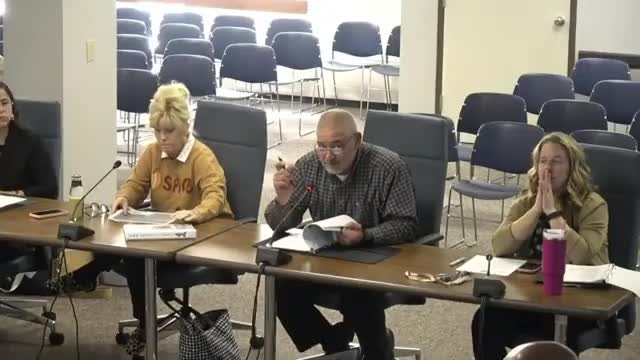Sheriff says access to FLOC camera system cut after audit; out-of-state agencies no longer have direct access
October 09, 2025 | McLean County, Illinois
This article was created by AI summarizing key points discussed. AI makes mistakes, so for full details and context, please refer to the video of the full meeting. Please report any errors so we can fix them. Report an error »

Sheriff Lane told the McLean County Justice Committee that the county stopped remote access to the FLOC camera system after an audit earlier this year showed broad and inconsistent use of U.S. Code classifications in entries and identified out-of-state departments with access.
A committee member asked when the sheriff’s office was notified of the audit; the sheriff said mid-July. The sheriff said the audit reviewed roughly 400,000 entries and that “there were hundreds that had this U.S. code” or entries marked for immigration-related activity, but that many entries used a broad U.S. Code designation that could encompass offenses ranging from illegal entry to human trafficking. “That statute is pretty broad and it’s hard to tell what it was used for. But nevertheless, we shut it off,” Lane told the committee.
Lane said the county now restricts direct access to Illinois police departments. If an out-of-state law enforcement agency seeks information, Lane said the agency can contact the sheriff’s office directly and the sheriff’s office will “decipher that information and give it to them.” The sheriff also said the county previously received public inquiries about departments using the system for matters beyond immigration enforcement, including reproductive-health issues and missing-person characterizations.
Why it matters: The county’s decision changes operational access to a regionally shared camera system and limits third-party queries to a mediated process through the sheriff’s office. Committee members asked clarifying questions about notification timing and scope; the sheriff provided the date of notice (mid-July), the audit’s approximate size (about 400,000 entries) and said the county had turned off direct external access.
What the sheriff said: “We shut it off,” and “If they have a criminal that they want information on, they can call us directly, and we can decipher that information and give it to them,” Lane said during the meeting.
Context: The committee raised concerns that some access records were coded only with a U.S. Code reference, making it difficult to determine the reason for queries. The sheriff’s description did not identify a specific U.S. Code section; the committee did not vote on any change to county policy during the meeting but heard that access had already been curtailed.
Provenance: The camera-access discussion began when a committee member referenced a WGLT article and asked the sheriff when the audit notice occurred (mid-July). The sheriff’s remarks appear in the meeting transcript starting with the committee’s request for clarification and conclude when the committee moved on to other business.
A committee member asked when the sheriff’s office was notified of the audit; the sheriff said mid-July. The sheriff said the audit reviewed roughly 400,000 entries and that “there were hundreds that had this U.S. code” or entries marked for immigration-related activity, but that many entries used a broad U.S. Code designation that could encompass offenses ranging from illegal entry to human trafficking. “That statute is pretty broad and it’s hard to tell what it was used for. But nevertheless, we shut it off,” Lane told the committee.
Lane said the county now restricts direct access to Illinois police departments. If an out-of-state law enforcement agency seeks information, Lane said the agency can contact the sheriff’s office directly and the sheriff’s office will “decipher that information and give it to them.” The sheriff also said the county previously received public inquiries about departments using the system for matters beyond immigration enforcement, including reproductive-health issues and missing-person characterizations.
Why it matters: The county’s decision changes operational access to a regionally shared camera system and limits third-party queries to a mediated process through the sheriff’s office. Committee members asked clarifying questions about notification timing and scope; the sheriff provided the date of notice (mid-July), the audit’s approximate size (about 400,000 entries) and said the county had turned off direct external access.
What the sheriff said: “We shut it off,” and “If they have a criminal that they want information on, they can call us directly, and we can decipher that information and give it to them,” Lane said during the meeting.
Context: The committee raised concerns that some access records were coded only with a U.S. Code reference, making it difficult to determine the reason for queries. The sheriff’s description did not identify a specific U.S. Code section; the committee did not vote on any change to county policy during the meeting but heard that access had already been curtailed.
Provenance: The camera-access discussion began when a committee member referenced a WGLT article and asked the sheriff when the audit notice occurred (mid-July). The sheriff’s remarks appear in the meeting transcript starting with the committee’s request for clarification and conclude when the committee moved on to other business.
View full meeting
This article is based on a recent meeting—watch the full video and explore the complete transcript for deeper insights into the discussion.
View full meeting
